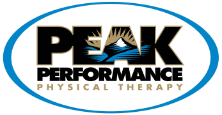Physical therapy in Baton Rouge for Baseball
Q: I pitch for my high school baseball team. This summer, I'd like to work on increasing my pitch speed. Are there some quick tips you can offer me?
A: The accuracy and speed of the pitch depend on many, many actions such as the foot position and orientation (turned out/turned in), shoulder and pelvis rotation, knee extension, and trunk motion and position.
All of these movements together form a concept of biomechanics referred to as kinematics. Baseball pitchers like you are very interested in the kinematics of pitching. They want to increase the ball velocity and improve their performance without adding stress to the pitching arm or ending up with an injury.
Pitching speed isn't just about the pitching arm. The entire body (arms, legs, trunk) is involved. The legs are really the foundational support for every pitch and should be the first place to start in improving ball velocity. For example, when the pitching foot leads off, is it pointed straight, turned out, or turned in? Even the smallest degrees of motion can make a difference. The foot position causes rotation of the pelvis. Too much rotation, too soon can slow the ball and ruin a pitch. Foot position transfers energy through the pelvis to the arm affecting force at the elbow and shoulder.
The force of the push-off of the throwing leg is directly linked with wrist velocity. Too short of a stride length can actually slow down the forward momentum of a ball. Studies show that pelvis and trunk rotation must be coordinated together to improve ball velocity. Greater pelvic rotation is needed to improve ball speed.
The lower body and trunk create the power that is channeled up the kinetic chain to the pitching arm. Each pitcher must work to find his or her own unique rhythm of movement, joint positions, and coordinated motion to produce an explosive pitch. They must do so without injuring themselves. Studies show that injuries are most likely to occur as a result of force on vulnerable soft tissues from repetitive pitches. And it's the moment of transition from one position to another, one movement to another that should be the focus of training and practice.
It may be helpful to you to have someone videotape a series of your pitches from beginning to end of practice (or game). You can watch these videos in slow motion and analyze each movement in the pitch. Look at the transitions between each phase from windup to stride, arm cocking, arm acceleration, and ball release to follow through. Watch for places where you may not be completely balanced. Starting from the bottom up, observe joint motion and position of the foot, knee, hip, wrist, elbow, and shoulder. Watch again and observe pelvis, trunk, and shoulder rotation during each phase.
Work with your coach, trainer, and/or a sports movement specialist such as a physical therapist or exercise physiologist to make changes in your pitch. Be prepared to practice, videotape, analyze, make changes, and practice some more. Then repeat the cycle until you achieve the results you desire. Be careful to avoid/prevent injuries by counting pitches and limiting the number per practice/week.
Reference: Dave Fortenbaugh, MS, et al. Baseball Pitching Biomechanics in Relation to Injury Risk and Performance. In Sports Health. July/August 2009. Vol. 1. No. 4. Pp. 314-320.
